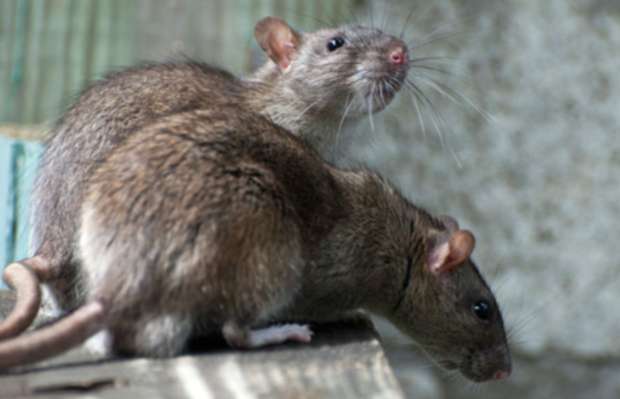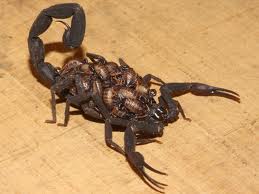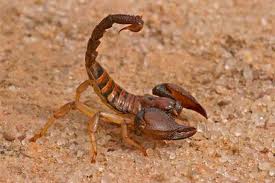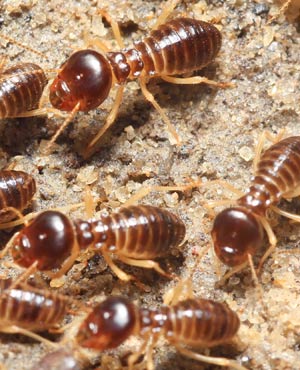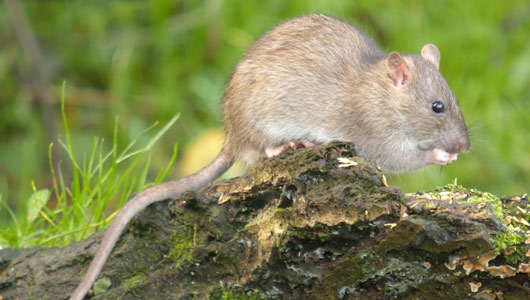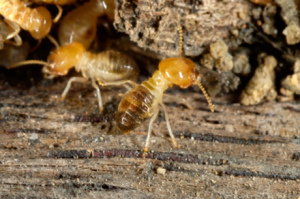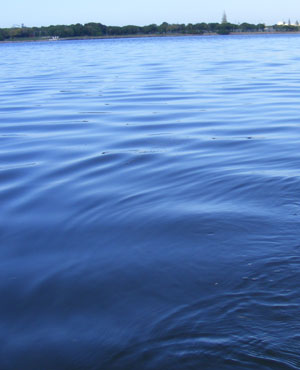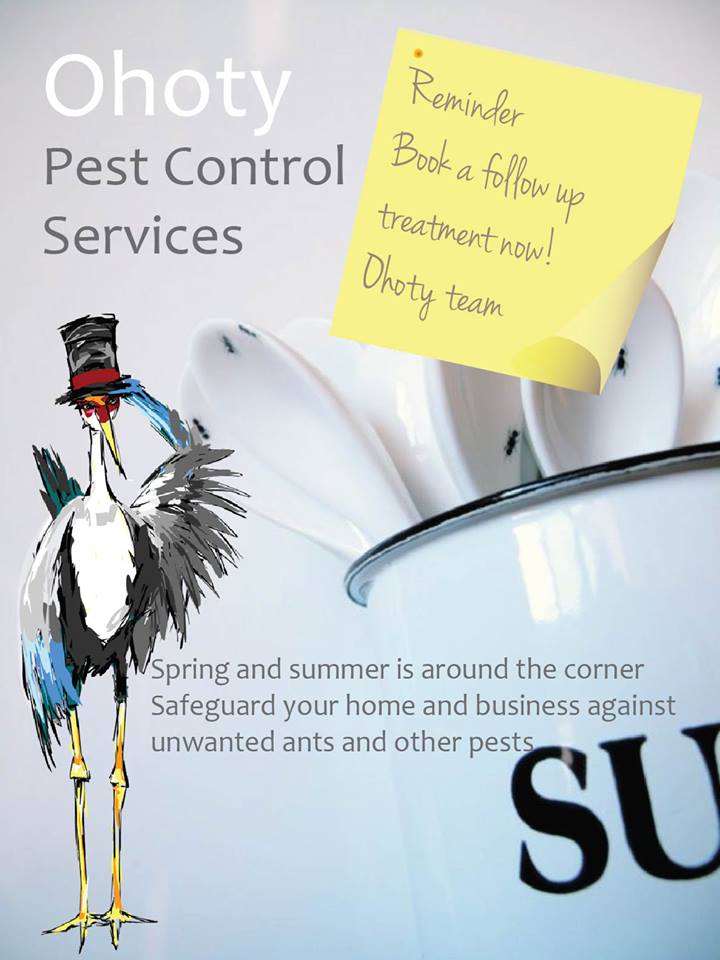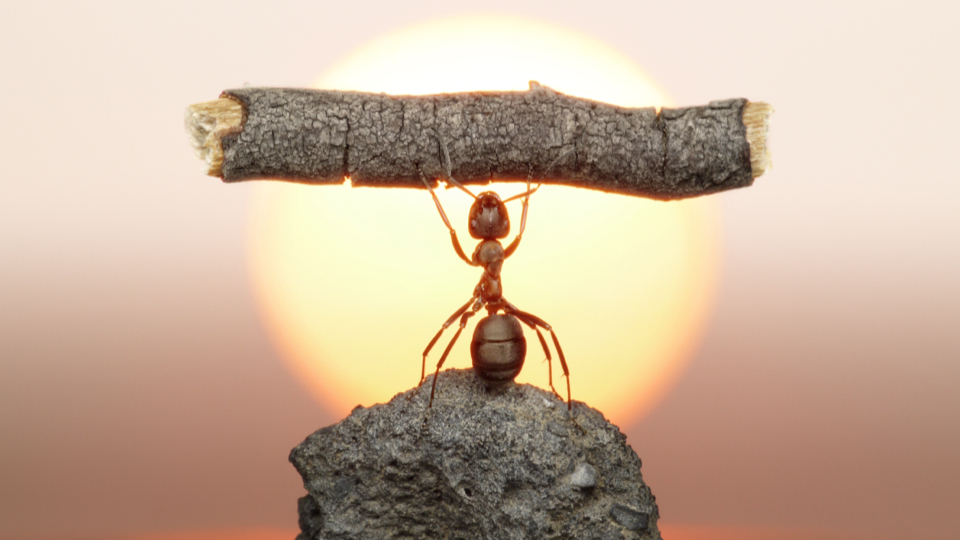
Get rid of rats, before they get rid of you!
During autumn there is enough food for them outside, but as soon as the weather turns cooler, rats and mice often venture indoors, where they find themselves a winter wonderland of warm shelter and food sources.
There are predominantly three main rodent species in South Africa namely the Norway or Brown rat, Roof or House Rat and the House mice.
The word ‘commensal’ is often synonymous with rodents as it literally means eating at the same table. Rodents will eat your food, damage your possessions and also spread disease throughout your home.
Domestic rodents are considered pests for the following three reasons:
1. Loss of food supplies
House mice and Roof rats are known to consume both stored food and growing crops such as rice, maize and sugar cane fields also contaminating food as they feed.
2. Damage to structures and materials
Rodents can cause severe damage to electricity and water supply equipment due to their gnawing and burrowing, as well as undermining the building structures.
3. Transmission of disease
All three the mentioned species can spread Salmonella through their droppings. Infected rats also transmit the bubonic plaque and Murine typhus onto humans through fleas. In addition rat bites are known to be infectious.
There are five golden rules to remember when managing rodent infestations in and around your home:
1. Inspection
Remember that knowing how to get rid of them means knowing where they can get into your home. Have a look around your home and try to determine where the infestation is coming from. Look for smear marks, droppings, food and structural damage.
2. Identification
By inspecting the rodent’s droppings, you will be able to determine which of the three typical species you have in your home, which in turn will allow you to determine the correct way to eliminate the problem.
3. Sanitation
In order to remove the rodent you need to make sure that you remove its food sources. This includes regular cleaning, making sure that food is stored in air-tight containers, as well as removing water sources such as stagnant pools, fountains and ponds.
4. Rodent proofing
Closing off all the typical places which would give rodents a gateway into your home is very important. Pay attention to holes in exterior walls and make sure to screen your down pipes leading in and out of the gutter.
5. Applying rodenticide
When deciding what rodenticide to use make sure that you read the label carefully or it could lead environmental damage as well as accidental poisoning of pets.
Mischke le Cordeur
Behavioural patterns of Scorpions
Scorpions are secretive creatures. Only when you know here to find them in an environment will you truly appreciate the population densities. They are often shy and reclusive that retreat to their shelters at the slightest disturbance. Scorpions are a good food source for many other animals. Because scorpion populations remain constant under normal conditions, they represent an available food source.
Animals such as meercats, mongoose, owls, frogs, lizards, spiders and even other species of scorpions will readily prey on scorpions. Because of their stable populations, scorpions make a good indicator of the health of an environment.
They are often found in arid environments that other animals find difficult to survive in. Their success at inhabiting these environments is due to their behaviour more than their physical adaptation. Nocturnal tendencies mean that they are active during cooler times. Prey in the form of arthropods and small vertebrates are also active during these times so their activity patterns match those of their prey.
Many desert living species live under the ground or at the base of vegetation. Burrows provide a microhabitat that is cooler and more humid than the surface during the day. Burrows also provide protection from predators.
Scorpions are opportunistic predators that will tackle just about anything small enough for them to overpower. Invertebrates for a large part of their diet but small lizards and mice may also be taken. Fellow scorpions may also form a large part of other more aggressive scorpion’s diet. The less aggressive scorpions however have adapted strategies at avoiding these more aggressive scorpions. Many for instance lie off the ground in vegetation where large species find it difficult to move in. Some are active under different environmental conditions than their aggressive relatives.
During the colder months when prey is not as available or when the ground is covered with snow, scorpions retreat to their shelters.
During harsh conditions, scorpions can simply wait it out. When favourable conditions return, mass emergencies of scorpions may occur. This mass emergence after harsh conditions may give rise to plague proportions of scorpions. Their changing of behavioural patterns in response to environmental conditions makes them very successful animals in many parts of the world.
Scorpions in South Africa
With over 160 species of scorpion, South Africa is truly a cool place to live! I know that many people would not agree with me but let me share a few secrets with you that may change your mind.
Out of all our scorpions, only 3 have even caused human fatalities. On average 8 to 12 people die from scorpion stings annually. Their strong neurotoxic venom affects the nervous system and causes heart palpitations, respiratory problems and slurred speech, intense pain and hyper sensitivity. We also have the world least venomous scorpion and coincidently the world longest. These giants attain lengths of over 21cm but their venom causes no more than a pin prick. South Africa’s good medical facilities ensure effective and prompt medical attention. Antivenom is available at most major centers especially where highly venomous scorpion abound.
Not only found in deserts and arid environments, they can be found in just about every terrestrial habitat in southern Africa. The only place you will not find scorpions is the high mountain peaks in Lesotho. Many species live in very specific habitats, so specific that there distributions can be mapped back to substrate, sand systems and mountain ranges. These amazing creatures can be found sheltering under rocks, logs, they make burrows and even live in trees. Their secretive nature and behaviours means that you probably do not know that there are scorpions around you, but they are there.
Scorpions are so cool! because there are so many wild stories surrounding their behaviour and habits. Some species can live without food or water for more than a year. During harsh times they simply wait it out. When the good times return, they emerge and make the most of it.
Beyond their seemingly venomous tendencies, scorpions live a far more exuberant and interesting life. It’s only when start looking at an animal in the right way do we realize the wonders of nature that are all around us.
Southern African scorpion can be divided into the following families and genera.
Buthidae
• Afroisometrus
• Parabuthus
• Uroplectes
• Pseudolychas
• Lychas
• Karasbergia
• Hottentotta
Liochelidae
• Hadogenes
• Opistacanthus
• Cheloctonus
•
Bothriuridae
• Lisposoma
• Brandbergia
Scorpionidae
• Opistophthalmus
Fun ant facts
- Like all insects, ants have six legs. Each leg has three joints.
- The legs of the ant are very strong so they can run very quickly. If a man could run as fast for his size as an ant can, he could run as fast as a racehorse.
- Ants can lift 20 times their own body weight.
- An ant brain has about 250,000 brain cells. A human brain has 10,000 million so a colony of 40,000 ants has collectively the same size brain as a human.
- The average life expectancy of an ant is about 40-60 days.
- The common Black Ants and Wood Ants have no sting, but they can squirt a spray of formic acid.
- The ant has two eyes, each eye is made of many smaller eyes.
- The job of the queen is to lay eggs which the worker ants look after.
- The Army Ant (Ecitron Burchelli) of South America, can have as many as 700,000 members in its colony.
- At night the worker ants move the eggs and larvae deep into the nest to protect them from the cold.
- The queen ant lays all the eggs in the anthill.
- Wood ants squirt acid from the end of their abdomens.
- Wood ant workers live seven to ten years.
- Wood ants make anthills out of twigs, leaves and soil.
- The queen ant lives up to ten or twenty years.
- The wood ant can threaten the enemy with open jaws.
- There are thirty-five thousand kinds of ants in the world.
- The male ant has wings for a short while.
- There are sixty species of ants in North America.
- The queen ant has wings.
- The army ant bites and stings any bug that comes toward it.
- The army ant can even bite a huge snake.
- Ants have two stomachs one for them and one to feed others.
- Some ants sleep seven hours a day.
- The queen licks the eggs to make them hatch.
- The queen feeds her eggs her own saliva.
- Some ants can have up to three queens.
Rodents
Commensal rodents constitute a majority of the rodent problems in both commercial and residential properties. Commensal rodents consist of the Norway Rat, the Roof Rat, and the notorious House Mouse. The word “commensal ” means these rodents live off man and return nothing of worth. The only possible category where they could be considered beneficial would be as garbage removal, and that is stretching it even for devoted animal activists.
These rodents are not native to the United States, they came from Europe with early explorers and settlers. Once they discovered the “New World” they, like the early settlers, multiplied and infested the entire continent.
RODENT FACTS:
All species of commensal rodents carry and spread various diseases. They include salmonellosis, plague, leptospirosis, hantaviriruses, and rickettsial pox.
- Rodents are often infested with fleas which they often share with those with whom they live.
- Rodents consume and contaminate significant numbers of the worlds food supply every year.
- Rodents cause extensive damage to properties by gnawing on wood and wiring, often causing fires.
- Rodents cause some people to jump on chairs and scream, often falling and braking bones.
Mice
There are species of native mice that occasionally invade houses, but the house mouse (mus musculus) are the prominent species that invade houses and businesses.
The House Mouse is found throughout the United States. They are omnivores, feeding on cereal grains, seeds, fruits, vegetables, and meats. Seed is the preferred food. They eat at multiple sites eating small amounts at each site. (20-30 sites per day) Daily consumption is about 1/10 of an ounce leaving the balance contaminated.
Mice can be found in cultivated fields, woods, below ground, or on the top floor of the Empire State building. They are excellent climbers and are inquisitive. They explore their home turf daily and inspect any new object.
Mice are prolific breeders and under ideal conditions will breed year round. The female will have an average of eight litters per season with an average of six pups per litter. At five weeks old, the pups are capable of mating. It is not unusual for a female to be lactating her young and pregnant with a new litter.
Recently there have been numerous outbreaks of Hantavirus in the United States carried and spread by the house mouse. The virus is contacted by humans through inhalation of dust in contaminated rodent areas, usually where droppings and contaminated food tend to collect. If you have or have had a mouse infestation, always wear a respirator when cleaning the area. Symptoms of Hantavirus are similar to the flu including fever of 101 +, chills, body ache, and troubled breathing. It can be fatal, so if suspected see your doctor.
The House Mouse: Some interesting facts
-Mice are excellent climbers and can run up most any roughened surface without breaking stride.
-Mice can swim, and apparently hold their breath. Many have been reported being flushed only to reappear minutes later wet and hungry.
-Mice Do not have bladders. They will relieve themselves at will anywhere.
-Mice can jump a vertical distance of 12 inches.
-Mice can reproduce all year round. They can become impregnated while nursing and have a new litter every forty-fifty days or so. Usually six young per litter.
-In six months a pair of mice can devour up to four pounds of food and produce 18,000 fecal droppings.
-Mice can live up to 18 months, but usually average one year.
-Mice can enter a structure from a hole as small as 1/4 inch in diameter.
-Mice are disease carriers, and can transmit diseases by biting, infecting food with their droppings, infecting food with urine, indirectly by fleas, indirectly by dying in a water supply, or indirectly via the dog or cat. Diseases include: Salmonella bacteria, tape worms, Favus (which causes bald spots), Rickettsial pox (rash, mild fever, and enlarged lymph nodes), Black Plague (from fleas recently reported in Colorado in Prairie Dogs), and Hantavirsus (Flu like symptoms that can be fatal. Cases recently reported in Sacramento and Houston.)
scapest
African mound-building Termites
Macrotermes jeanneli, M. bellicosus, and related species are fungus-growing termites, which build spactacular earth mounds whith usually one single, high, towering chimney.
A colony starts with one pair – “king” and “queen”. The queen is larger than other colony members and swollen with eggs. She can live and reproduce for many years. The king fertilises the queen and helps to tend the young during the foundation of the colony.
All other members of the large colony, which may comprise up to one million animals, are the offspring of this pair, either juveniles or sterile adults belonging to four castes, two worker and two soldier castes. The castes are structurally different and have different functions.
The larger workers, which are sterile males, are foragers and build on the surface of the mound. The smaller workers, genetically females, are responsible for tasks inside the mound such as cultivating the fngus comb and tending the larvae and the reproductive animals.
The major soldiers guard the entrances to the mound, while the smaller soldiers guard and defend the workers. All soldiers are sterile females.
The termite species kept by zoos collect grass, hay, straw and vegetable litter. Food is processed colectively in the mound using the symbiotic fungus Termitomyces sp. The termites feed either on the plant material or eat the fungi as a source of protein.
Priodically winged reproductive animals are produced alongside the sterile brood. The reproductives fly out of the nest in thousands, and after shedding the wingspair up to found new colonies.
Termites undergo a metamorphosis with three developmental stages: egg, nymph and adult. The eggs hatch into nymphs (the first instar) that are fed by the workers, and these nymphs then moult several times, differentiating into worker, soldier or reproductive forms. Development into adult forms takes several months, depending on food, temperature and the size of the colony.
waza
10 Frightening Facts You Probably Didn’t Know About Ants
We all know ants are incredibly capable creatures. They live in vast, interconnected colonies, can lift several times their own body weight, and coordinate their activity with incredible precision.But many of the things that make ants impressive would also make them formidable foes. Perhaps it’s time we took a look at some of these strengths in greater detail. Remember: it’s important to know your enemy – erm, I mean your new insect overlords.
10) Ants are as old as the dinosaurs
In 2006, Scientists from Harvard and Florida State University collaborated to conduct a massive genetic analysis on ants from 19 out of 20 known subfamilies. Their findings suggested that ants first arose in the mid-Cretaceous period — about 110—130 million years ago. And yes, that means:
9) Ants have already survived a mass extinction event
The Cretaceous-Paleogene extinction event (still commonly referred to as the Cretaceous-Tertiary — or “K-T” — extinction event) is thought to have occurred approximately 65 million years ago following an absolutely massive impact event. Widely regarded as the downfall of the dinosaurs (and, incidentally, the rise of mammals), the years following the KT-extinction event are actually believed to have been a time of incredibly rapid speciation and worldwide expansion for ants, marking what researchers Bert Hölldobler and Edward O. Wilson — authors of the Pulitzer-prize winning book The Ants — call “a rise to ecological dominance.”
8) Ants have conquered almost the entire globe
The success of the ants all those millions of years ago continues to this day. In an article published in a 2000 issue of PNAS, entomologist Ted Schultz calls the rise of the ants “arguably the greatest success story in the history of terrestrial metazoa” ( i.e. pretty much any multicellular animal on Earth — and yes, that includes humans), and rightfully so.
With the exception of Antarctica, the Arctic, and a handful of islands, just about every piece of land on Earth harbors at least one native ant species; the ones that don’t host invasive species. Take the Hawaiian islands, for instance — not one of their more than 50 established ant species is believed to be native to the archipelago.
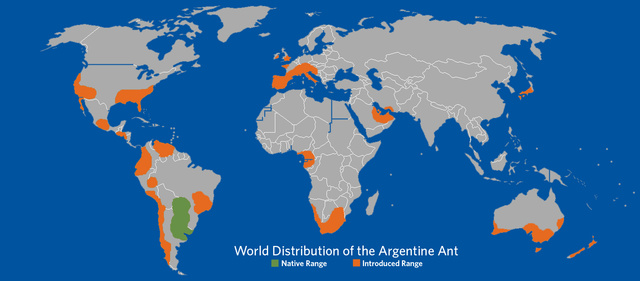 7) One group of ants conquered six continents
7) One group of ants conquered six continentsTake the Argentine ant, Linepithema humile, for example. In 2000, biologists Andrew Suarez and his colleagues at UC Davis reconstructed the invasion history of the L. humile. The team revealed that in the last century alone, the species has become established in at least 15 countries throughout the world — including a number of isolated, oceanic islands (including Hawaii) — spanning six continents. Shown here is the world distribution of the Argentine ant.
6) The total ant population makes our 7 billion look weak
In their Pulitzer-prize winning book The Ants, researchers Bert Hölldobler and Edward O. Wilson estimate that there are upwards of 10,000,000,000,000,000 individual ants alive on Earth at any given time.
5) Some ants are quite large
Of course, even at numbers exceeding 10,000 trillion, ants are small, right? Well, that depends entirely on what you consider small. The largest ant ever discovered was actually a fossilized specimen belonging to Titanomyrma giganteum, was about 2.4 inches long and had a wingspan of almost six inches. Granted, T. giganteum isn’t around anymore, and many ants are less than a millimeter long — but there are still species like the African driver ant, Dorylus wilverthi, that exceed two inches in length. Does that sound small to you?
4) Ants have a hive mind
Truth be told, it doesn’t matter if it sounds small to you or not. When 50-million of them come together to form a single, eerily coordinated superorganism (and yes — large, self-organized ant colonies are commonly referred to as “superorganisms”) you can bet your ass you’ll think it looks a lot bigger than a single, 2-inch ant.
3) In some regions of the world, ants can account for over a quarter of the animal biomass
But a 50-million ant superorganism, believe it or not, doesn’t even begin to capture the true extent of the global ant presence. We’re talking about worldwide ant domination, after all — so how much of the Earth’s biomass do ants really account for?
In an article published in 2000 in Proceedings of the National Academy of Sciences, entomologist Ted R. Schultz writes that on average, ants “monopolize 15—20% of the terrestrial animal biomass, and in tropical regions where ants are especially abundant, they monopolize 25% or more.”
Granted, it would be misleading to say that ants have the largest biomass of any individual species on Earth (ants are actually a taxonomic Family that comprises over 20,000 known species) — but that’s not to say they couldn’t potentially set aside their interspecies differences. After all:
2) Ants cooperate with other species
There are over 200 known species of so-called fungus growing ants. Scientists had long assumed that fungi cultivated by these ants were simply passed on between generations within individual species. But in a study conducted in 2000, researchers at the University of Texas at Austin discovered that the ants’ cultivars are occasionally transferred between species, as well.
Interspecies cooperation would be one of the biggest hurdles along the path to establishing a global ant empire — but if fungus-growing ants can get along, perhaps other species could as well.
Then again, maybe cooperation wouldn’t be necessary, because:
1) Ants practice slavery
Many species of ants are known to raid neighboring colonies and steal eggs or larvae in a practice known as “dulosis”. The forcibly acquired young are then either eaten or put to work.
Species that practice dulosis are called, quite simply, “slave-making ants,” and they rely on this practice to support their colonies. In fact, some species of ants are thought to be incapable of feeding themselves in the absence of slave labor — to pillage and enslave is all they know.
Robert T Gonzalez
UN: Water, sanitation a massive challenge
Water and sanitation remains a massive challenge, but one that should be tackled to relieve the suffering of millions, the UN has said.
To deal effectively with the water and sanitation crisis… is fundamental for fighting disease and poverty,” UN deputy Secretary-General Jan Eliasson said at the World Water Week plenary session in Stockholm on Monday.
World Water Week kicked off on Sunday with the proposal that the global scarcity of water is a critical risk to human populations and that there needs to be a greater urgency in addressing the pressures on the resource.
Eliasson expressed his hope that water management becomes a key “mobiliser” in politics.
“In a world of population growth and the pressures on water resources within and among nations, sound and clear water management is huge task and a clear imperative for all of us, and we have no time to waste,” he said.
Demand
Water quality is important and many environmentalists have argued that in SA, there should be an exploration of dual water networks to reduce drinking water waste.
The demand for potable water is expected to sharply increase over the next decade and this might have serious implications for social cohesion.
“In South Africa, water demand is expected to rise by 52% within the next 30 years while the supply of water is sharply declining. If current trends of leakage from aged and poorly maintained municipal infrastructure and the loss of wetlands persist, this growth in demand will intensify competition for water resources across all sectors of the economy,” said Brand South Africa on the SA info website.
“Water quality, as you know, to a large degree, still fails to the meet basic WHO [World Health Organisation] standards. This glass of water is still a luxury – a dream – for 768 million people. Let’s not forget that,” said Eliasson.
According to environmental organisation Food Tank, water pollution has measurable impacts in society.
Contaminated water plays a significant role in malnutrition – vomiting and diarrhoea caused by water-borne diseases prevent the absorption of key nutrients in food, and are responsible for the deaths of approximately 1.3 million children every year,” said Food Tank co-founder Danielle Nierenberg.
Food Tank believes that localised solutions for water are more realistic and sustainable to implement. This is especially true for developing countries where there is often a lack of government infrastructure.
“Both new techniques – such as solar-powered drip irrigation methods in Benin – and old – such as zai, an effective form of rainwater harvesting in Burkina Faso, should serve to inform the future of farming,” said Nierenberg.
Duncan Alfreds
Danger stalks SA dams
The pollution in South African river systems is an indicator of a looming water crisis if it is not managed correctly, an environmental researcher has asserted.
“A large proportion of our dams are what is known as eutrophic – that means that there’s too much algae that is starting to live in the water because of nutrient like phosphate,” hydrogeologist Christine Colvin, senior manager of fresh water programmes at the WWF SA told News24.
She warned that the release of toxins into drinking water in dams presented a risk to all water consumers.
“Those algae bloom and then they die, and when they die, they release toxins – cytotoxins – into the water.”
According to her research, the most common pollutant in South African river systems was phosphate.
Natural means
“The most widespread pollutant in our rivers is phosphate and that’s something that comes off agricultural land. It’s released from the soil and it’s used in fertilizers.
“Work that I saw published about two years ago said that 80% of our rivers were exceeding the phosphate levels,” said Colvin.
Phosphate also occurs naturally and could end up river systems by natural means.
Colvin conceded that natural phosphate could naturally enter river systems, but said that the amounts of natural phosphate were usually very low and larger amounts could directly attributed to pollution.
“The natural phosphate levels are incredibly low so you can just have one poorly managed farm or one faulty wastewater treatment plant way up in river system and it’s going to end up polluting that entire ecosystem,” she said.
As a nutrient, the phosphate has a measurable impact on the river ecosystem which feeds the dams.
“Phosphate is a nutrient that then shifts the whole ecosystem of that river system, so you can start getting algal blooms; the indigenous and natural fish and vegetation that should be living in the river system are ‘out-competed’ and you have a whole new ecosystem that develops in that river,” Colvin explained.
Research funding
According to the Water Research Commission (WRC), about a third of South African dams face eutrofication which occurs when high levels of pollutant in water bodies result in excessive plant growth.
The Water Wheel report of 2008 found that 35% of SA dams are impaired by the process of eutrofication, higher than the continental average of 28%.
Dams in Europe have a rate of 53% while those in North America are at 48%.
The WRC report said that SA had fallen from its status as a leader in the field of eutrophication study. This was due, in part, to a termination of funding for the research, the organisation found.
“Many of the researchers involved in early eutrophication research have since moved into better research fields, into consultation or have emigrated. As a result, appropriate management strategies directed against eutrophication have been seriously constrained by a widespread lack of understanding of the problem, particularly at the decision-making level.”
Duncan Alfreds

